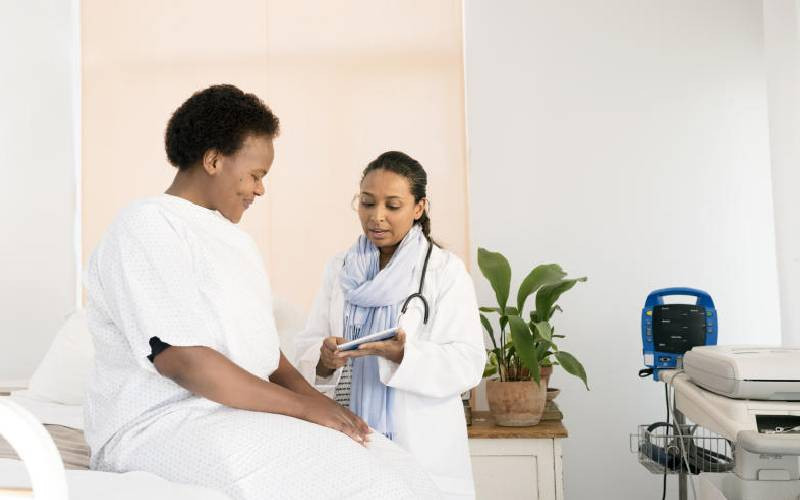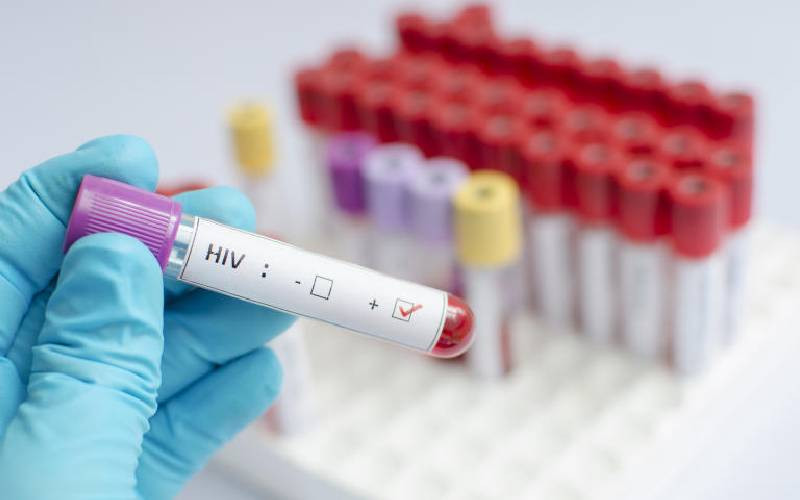
Cervical cancer has become a nightmare for many women as more than 1,600 women die of the disease annually in Kenya, making it one the leading cause of cancer deaths in females.
However, it is a preventable disease if treatment commences at an early stage.
According to the World Health Organisation, almost all (99 per cent) cervical cancer cases are linked to infection with high-risk human papillomaviruses (HPV), an extremely common virus transmitted through sexual contact.
HPV can be transmitted to anybody who has sexual contact with an infected person. The modes of infection include vaginal sex, oral sex, and deep kissing. HPV is directly associated with the number of sexual partners one has.
Professor Nelly Mugo, a research scientist with Kemri, said HPV can affect cells in the vagina and around the vulva.
“If a woman has low-risk HPV, she may see warts on her vulva, the outer part of the vagina. These warts may present as a cluster that looks like a cauliflower,” Pro Mugo said.
Other symptoms are bleeding after sex, unusual discharge of lumps in the vagina, pain while having sex, and elongated bleeding between periods.
- Cancer is not a death sentence, survivor says
- Alarm as cancer cases rise in Nyandarua
- Journey to Surviving Cervical Cancer
- Why women aren't lining up for life-saving screening, vaccine
Keep Reading
Professor Mugo said as cancer grows and advances, it may start to press against the nerves in the pelvic wall thus resulting in pain in the legs, swelling of the legs, back pain, and hip pain. These symptoms occur in women only.
She said that at least half of sexually active people will have HPV at some point in their lives but this may not necessarily develop into cervical cancer.
Many factors put women at risk of getting cervical cancer, among them having multiple partners.
“In Kenya, a better reporting system in hospitals has made the Government get the correct data and statistics on cervical cancer,” said Dr Patrick Amoth, Acting Director General for Health at the Ministry of Health while speaking during a workshop organised by Kenya Editors Guild.
Early onset of sexual activity, recurrent sexually transmitted infections, low social class, poor personal hygiene, having a co-wife with cervical cancer, family history of cancer and HIV/Aids infection have aggravated the number of cervical cancer cases in the country, revealed Dr Amoth.
He said the government is setting up cancer screening centres in different regions with each centre having two screening machines. The cervix is the lower part of the womb or uterus often referred to as the neck of the womb.
Dr Joseph Aluoch, a medical consultant who is also the patron of the HIV Clinicians Society of Kenya, explained that the organs and tissues of the body are made up of tiny building blocks called cells. The cells are constantly becoming old and dying out and new ones are produced to replace them, doctors, especially gynaecologists and obstetricians are explaining that normally, cells divide in an orderly and controlled manner.
If, for some reason, the process gets out of control, the cells continue dividing, developing into a lump (tumour). Tumours can be benign or malignant. Cancer is the name given to a malignant tumour.
Dr Aluoch said a doctor can tell if a tumour is benign or malignant by examining a small sample of the cells under a microscope (biopsy). A malignant tumour consists of cancer cells that can spread beyond the original area. If the tumour is not treated it may spread and destroy surrounding tissues.
Screening aims to detect cancer at an early stage when treatment may be more effective. Cervical cancer screening can be done using a method known as liquid-based cytology or a cervical smear (pap smear).
Dr Aluoch noted that prevention of cervical cancer can be achieved by routine pap smear and every woman aged over 25 years should have a pap smear done at least once every two years. However, if one can afford then it is better to do it annually.
Experts say HIV infections increase the risk of developing cervical cancer. Scientific research has shown that up to 70 per cent of invasive cervical cancer is due to HPV.
“This virus can cause slow changes in the cervix, which may take between five to 15 years before developing into invasive cancer and it is this process, which is hastened by HIV infection,” said Dr Aluoch.
Unfortunately, less than 30 per cent of women have access to pap smear screening. Vaccines against HPV are available and these vaccines are recommended for girls before the debut of sex.
Professor Mugo said HPV is 98 per cent effective as clinical trials indicate a high level of effectiveness, safety and efficacy. She urges young girls and boys to go for vaccination to prevent the spread of cervical cancer.
Dr Amoth reveals that Kenyans can now get an early cervical cancer diagnosis, screening and vaccination from public hospitals free of charge. He says that the Integrated and Molecular Centre, a facility based at Kenyatta University Teaching, Referral and Research Hospital is operational.
“Cervical cancer is a public health problem globally and the ministry plans to vaccinate 90 per cent of women and men by 2030,” Dr Amoth said.
He added that, at the moment, only 38 per cent of Kenyans have been vaccinated against cervical cancer.
“We have all the arsenals to prevent the disease and the Government has tried to reach out to schools, sensitise girls in rural areas about the dangers linked to cervical cancer and the need to get vaccinated,” says Dr Amoth.
 The Standard Group Plc is a multi-media organization with investments in media platforms spanning newspaper print
operations, television, radio broadcasting, digital and online services. The Standard Group is recognized as a
leading multi-media house in Kenya with a key influence in matters of national and international interest.
The Standard Group Plc is a multi-media organization with investments in media platforms spanning newspaper print
operations, television, radio broadcasting, digital and online services. The Standard Group is recognized as a
leading multi-media house in Kenya with a key influence in matters of national and international interest.











